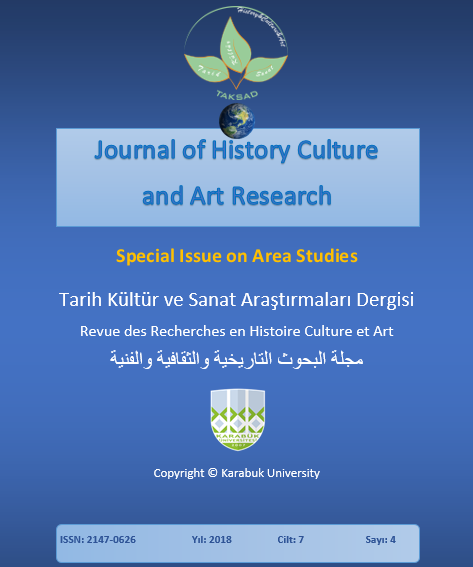The Problem of Female Subjectivity in the Novel “The Handwriting of Leonardo” by Dina Rubina
DOI:
https://doi.org/10.7596/taksad.v7i4.1849Keywords:
Female prose, Gender picture of the world, Dina Rubina, "The Handwriting of Leonardo", Female subjectivity, Heterotopy of the circus, Motif of the mirror.Abstract
The article is devoted to the consideration of the problem of female subjectivity, which is directly included in the process of conceptualizing the gender picture of the world. This problem occupies a central position in the novel by Dina Rubina's "The Handwriting of Leonardo" (2008), while the main form of her artistic presentation is the heterotopy of the circus. The puzzle organization of this heterotopy allows you to focus attention on the circus culture as a way of life, as a kind of cosmos based on a transgressive act. D. Rubina, playing circus nomadism, turns the heterotopy of the circus into a space for the deployment of female subjectivity, an important role in this case is the fundamental refusal of the circus to "tell" and "reflect", its utmost demonstrativeness.
Androgyny of the main heroine of the novel by Anna Nesterenko becomes an indirect evidence of the reduction of corporeality, focusing on the production of female subjectivity, the realization of which is associated with the motive of the mirror: the view "on oneself" reveals the result of looking "into oneself." One of the forms of representation of the mirror motif is the interaction of an objectified and personalized narrative, while the masculine-personalized narrative (with the epistolary of Senya and the monologized narrative of Volodya in conversation with the Interpol investigator Robert Kerler) fulfills in the novel the role of a peculiar mirror, allowing to realize the view "on oneself." The correlation of these two aspects becomes a reflection of the process of the formation of female subjectivity, the space for the unfoldment of which is the heterotopy of the circus de-centered in all its manifestations.
References
Arziamova, O. V. (2011). Peculiarities of the organization of improperly direct speech in Russian contemporary art prose. Bulletin of the Baltic Federal University. I. Kant. Series Philology, Pedagogy, Psychology, 8.
Burenina-Petrova, O. (2014). The Circus in the Space of Culture. Moscow: Novoe.
Konstantinova, N. V. (2008). Syntactic and punctuation-graphic means of contaminating the speech of the author and the character. Studia Linguistica XVII. Language and text in the problem field of the humanities, St. Petersburg: Russian State Pedagogical University.
Kravchinska, M. A. & Hayrutdinova, G. A. (2016). Gender category of nouns: On a material of comparison of Russian and Polish languages. Journal of Language and Literature, 7(2), 253-256.
Levin, (1988). The Mirror as a Potential Semiotic Object. Scientific notes of the Tartu State University of Labor on Sign Systems, 22.
Prokhorov, T. G. & Fattakhova, R. R. (2014). Peculiarities of the narrative structure of the novel by Dina Rubina. The Handwriting of Leonardo. Philology and Culture, 2(36).
Rubina, D. (2008). The Handwriting of Leonardo. Moscow: Eksmo.
Sayapova, A. M. & Arsenteva, E. F. (2014). Onthological essence of Vyacheslav Ivanov's symbolic hermeneutics in the context of Martin Heidegger's philosophy. Life Science Journal, 11(6), 860-864.
Shevchenko, A. R. & Nesmelova, O. O. (2015). Gender identity in British postcolonial novel: Hanif Kureishi's “The Buddha of Suburbia”. Social Sciences, 10(4), 421-425.
Zinnatullina, Z.; Khabibullina, L. & Popp, I. (2017). The Opposition of East and West in the Long Day Wanes Novel by Anthony Burgess. Journal of History Culture and Art Research, 6(4), 623-630. DOI: http://dx.doi.org/10.7596/taksad.v6i4.1155
Downloads
Published
How to Cite
Issue
Section
License
All papers licensed under Creative Commons 4.0 CC-BY.- Share — copy and redistribute the material in any medium or format
- Adapt — remix, transform, and build upon the material for any purpose, even commercially.
Under the following terms:
Attribution — You must give appropriate credit, provide a link to the license, and indicate if changes were made. You may do so in any reasonable manner, but not in any way that suggests the licensor endorses you or your use.
- No additional restrictions — You may not apply legal terms or technological measures that legally restrict others from doing anything the license permits.







